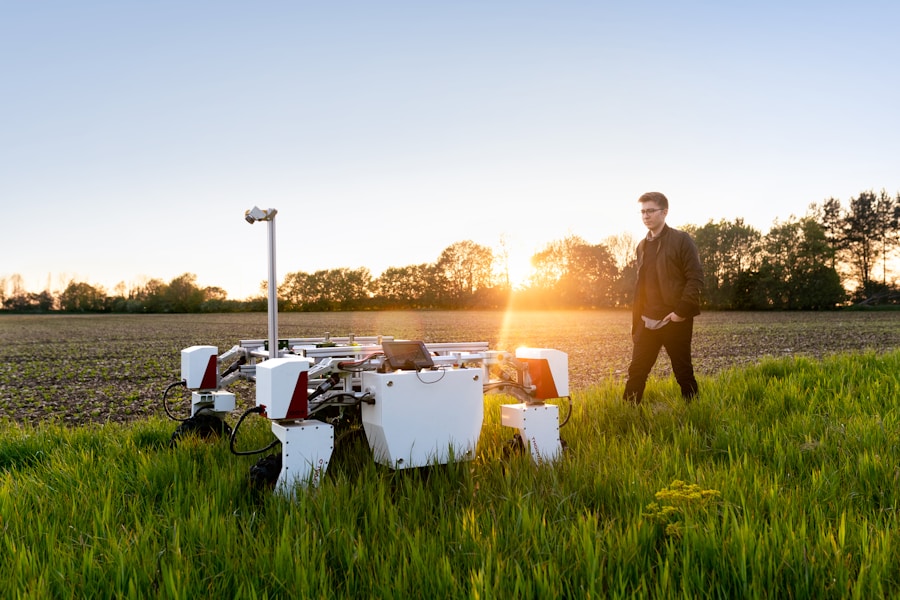Graphcore, a pioneering company in the realm of artificial intelligence (AI) and machine learning, has emerged as a formidable player in the development of specialized hardware designed to accelerate deep learning processes. Founded in 2016 in Bristol, UK, Graphcore has quickly garnered attention for its innovative approach to AI chip design, particularly with its flagship product, the Intelligence Processing Unit (IPU). This cutting-edge technology is engineered to handle the complex computations required for training and deploying machine learning models, making it a vital asset for researchers and enterprises alike.
As the demand for AI capabilities continues to surge across various industries, Graphcore’s contributions are becoming increasingly significant. The company’s vision extends beyond merely creating faster chips; it aims to redefine how AI is approached and implemented. By focusing on the unique requirements of machine learning workloads, Graphcore has positioned itself at the forefront of a technological revolution.
The IPU architecture is designed to optimize parallel processing, enabling it to manage vast amounts of data simultaneously. This capability is crucial for deep learning applications, which often involve intricate neural networks that require substantial computational power. As we delve deeper into the need for advancing KI chip development, it becomes clear that Graphcore’s innovations are not just timely but essential for the future of AI.
Key Takeaways
- Graphcore is a UK-based semiconductor company specializing in AI and machine learning chip development.
- The need for advancing KI chip development is driven by the increasing demand for more efficient and powerful hardware to support complex deep learning tasks.
- Graphcore is advancing KI chip development through its innovative IPU (Intelligence Processing Unit) architecture, designed specifically for AI workloads.
- Graphcore’s advancements in KI chip development have shown significant improvements in deep learning efficiency, with faster training times and lower power consumption.
- When comparing Graphcore’s advancements to other KI chip developments, the IPU architecture stands out for its ability to handle complex AI workloads with high efficiency.
The Need for Advancing KI Chip Development
The rapid evolution of artificial intelligence has created an insatiable demand for more powerful and efficient computing solutions. Traditional processors, such as CPUs and even GPUs, are increasingly struggling to keep pace with the complex requirements of modern AI applications. As deep learning models grow in size and complexity, the limitations of existing hardware become more pronounced.
This has led to a pressing need for specialized chips that can handle the unique demands of AI workloads without compromising performance or efficiency. Moreover, the sheer volume of data generated in today’s digital landscape necessitates a shift in how we approach computing. With vast datasets being used to train machine learning models, the ability to process this information quickly and accurately is paramount.
As organizations strive to harness the power of AI, they require hardware that can deliver high performance while minimizing energy consumption and operational costs. This growing need underscores the importance of companies like Graphcore, which are dedicated to pushing the boundaries of what is possible in KI chip technology.
How Graphcore is Advancing KI Chip Development

Graphcore’s approach to advancing KI chip development is characterized by its commitment to creating purpose-built hardware that addresses the specific challenges posed by deep learning. The IPU architecture is a testament to this philosophy, featuring a unique design that allows for massive parallel processing capabilities. Unlike traditional processors that are optimized for general-purpose computing, the IPU is tailored for machine learning tasks, enabling it to execute multiple operations simultaneously with remarkable efficiency.
In many deep learning applications, data can be highly irregular and sparse, which can lead to inefficiencies when processed by conventional hardware. The IPU’s architecture is designed to exploit these sparsities, allowing it to deliver superior performance in scenarios where traditional chips may falter.
Additionally, Graphcore has developed a software ecosystem known as Poplar, which complements its hardware by providing developers with tools and libraries specifically optimized for IPU-based applications. This holistic approach ensures that users can maximize the potential of Graphcore’s technology while simplifying the development process.
The Impact of Graphcore’s Advancements on Deep Learning Efficiency
| Advancement | Impact |
|---|---|
| Graphcore’s IPU Technology | Significantly faster training times |
| Increased Model Parallelism | Improved efficiency in handling larger models |
| Reduced Communication Overhead | Enhanced scalability for distributed training |
| Lower Power Consumption | Energy-efficient deep learning computations |
The advancements made by Graphcore in KI chip development have profound implications for deep learning efficiency. By providing a platform that is specifically designed for AI workloads, Graphcore enables researchers and developers to train models faster and more effectively than ever before. The IPU’s architecture allows for greater throughput and lower latency, which translates into shorter training times and quicker iterations on model development.
Furthermore, the energy efficiency of Graphcore’s chips cannot be overlooked. As organizations increasingly prioritize sustainability and cost-effectiveness, the ability to perform complex computations with lower power consumption becomes a critical factor. Graphcore’s IPUs are engineered to deliver high performance while consuming significantly less energy compared to traditional GPUs.
This not only reduces operational costs but also aligns with global efforts to minimize the environmental impact of computing technologies. As a result, Graphcore’s advancements are not just enhancing deep learning efficiency; they are also contributing to a more sustainable future for AI development.
Comparing Graphcore’s Advancements to Other KI Chip Developments
In the competitive landscape of KI chip development, Graphcore stands out for its unique approach and innovative technology. While other companies have made strides in creating specialized hardware for AI—such as NVIDIA with its GPUs and Google with its Tensor Processing Units (TPUs)—Graphcore’s focus on parallel processing and sparse data handling sets it apart. Each of these technologies has its strengths; however, Graphcore’s IPUs are particularly well-suited for certain types of deep learning tasks that require extensive parallelism.
When comparing performance metrics, Graphcore’s IPUs have demonstrated impressive results in benchmarks that measure training speed and efficiency across various machine learning frameworks. While NVIDIA’s GPUs have long been the go-to choice for many AI practitioners due to their versatility and established ecosystem, Graphcore’s dedicated architecture offers compelling advantages in specific scenarios, particularly those involving large-scale models or complex neural networks. As organizations evaluate their options for AI hardware, understanding these distinctions will be crucial in selecting the right technology for their needs.
The Future of KI Chip Development in Deep Learning

Looking ahead, the future of KI chip development in deep learning appears promising, with companies like Graphcore leading the charge toward more efficient and powerful solutions. As AI continues to permeate various sectors—from healthcare to finance—there will be an increasing demand for hardware that can support advanced machine learning applications at scale. This trend will likely drive further innovation in chip design, as manufacturers seek to create products that can meet the evolving needs of AI researchers and developers.
Moreover, as deep learning models become more sophisticated and data-intensive, there will be a growing emphasis on collaboration between hardware and software development. Companies like Graphcore are already taking steps in this direction by providing comprehensive software ecosystems that enhance the usability of their hardware. In the coming years, we can expect to see more integrated solutions that combine cutting-edge hardware with advanced software frameworks, enabling developers to unlock new levels of performance and efficiency in their AI projects.
Challenges and Limitations of Advancing KI Chip Development
Despite the significant advancements made by companies like Graphcore in KI chip development, several challenges and limitations remain. One major hurdle is the rapid pace of technological change within the AI landscape itself. As new algorithms and techniques emerge, there is a constant need for hardware that can adapt to these innovations.
This creates pressure on chip manufacturers to stay ahead of the curve while ensuring compatibility with existing software frameworks. Additionally, while specialized chips like Graphcore’s IPUs offer remarkable performance benefits for certain applications, they may not be as versatile as traditional processors in handling a broader range of computing tasks. This limitation can pose challenges for organizations that require a more generalized computing solution alongside their AI workloads.
Striking a balance between specialization and versatility will be crucial as companies navigate their hardware choices in an increasingly complex technological environment.
The Potential of Graphcore’s Contributions to Deep Learning Efficiency
In conclusion, Graphcore’s contributions to KI chip development represent a significant leap forward in enhancing deep learning efficiency. By focusing on specialized hardware designed specifically for AI workloads, Graphcore has created a platform that empowers researchers and developers to push the boundaries of what is possible in machine learning. The unique architecture of the IPU, combined with its energy-efficient design and robust software ecosystem, positions Graphcore as a leader in this rapidly evolving field.
As we look toward the future of AI and deep learning, it is clear that advancements in KI chip technology will play a pivotal role in shaping the landscape. Companies like Graphcore are not only addressing current challenges but also paving the way for new possibilities in AI research and application. With continued innovation and collaboration within the industry, we can anticipate a future where deep learning becomes even more accessible and impactful across various domains—ultimately transforming how we interact with technology and harness its potential for societal benefit.
For those interested in the cutting-edge developments in AI chip technology, particularly in the realms of computational power and deep learning, Graphcore’s innovations in enhancing efficiency are noteworthy. While the specific details on Graphcore’s advancements are not covered in the provided links, those looking to explore broader contexts of technological innovation might find value in related discussions and resources. For instance, exploring the philosophical implications of emerging technologies, such as the metaverse, can provide a unique perspective on how these innovations might shape our future. You can delve deeper into such discussions by reading an intriguing article on what Diogenes might say about the metaverse here.
FAQs
What is Graphcore?
Graphcore is a semiconductor company that specializes in the development of AI-accelerator chips and systems for machine learning and artificial intelligence applications.
What is a KI-Chip?
A KI-Chip, or AI chip, is a specialized processor designed to perform the complex calculations required for artificial intelligence and machine learning tasks. These chips are optimized for parallel processing and are capable of handling large amounts of data simultaneously.
What is the significance of Graphcore’s KI-Chip development?
Graphcore’s KI-Chip development is significant because it aims to provide high-performance, energy-efficient solutions for deep learning and AI workloads. These chips are designed to accelerate the training and inference processes for neural networks, leading to faster and more efficient AI applications.
How does Graphcore’s KI-Chip contribute to innovation in AI and deep learning?
Graphcore’s KI-Chip contributes to innovation in AI and deep learning by providing a powerful and efficient hardware solution for training and running complex neural networks. This enables researchers and developers to explore new frontiers in AI and develop more advanced machine learning models.
What are the benefits of Graphcore’s KI-Chip in terms of efficiency improvement?
Graphcore’s KI-Chip offers improved efficiency by delivering higher performance with lower power consumption. This allows for faster training and inference times, reducing the overall cost and energy requirements of AI and deep learning applications.











Leave a Reply